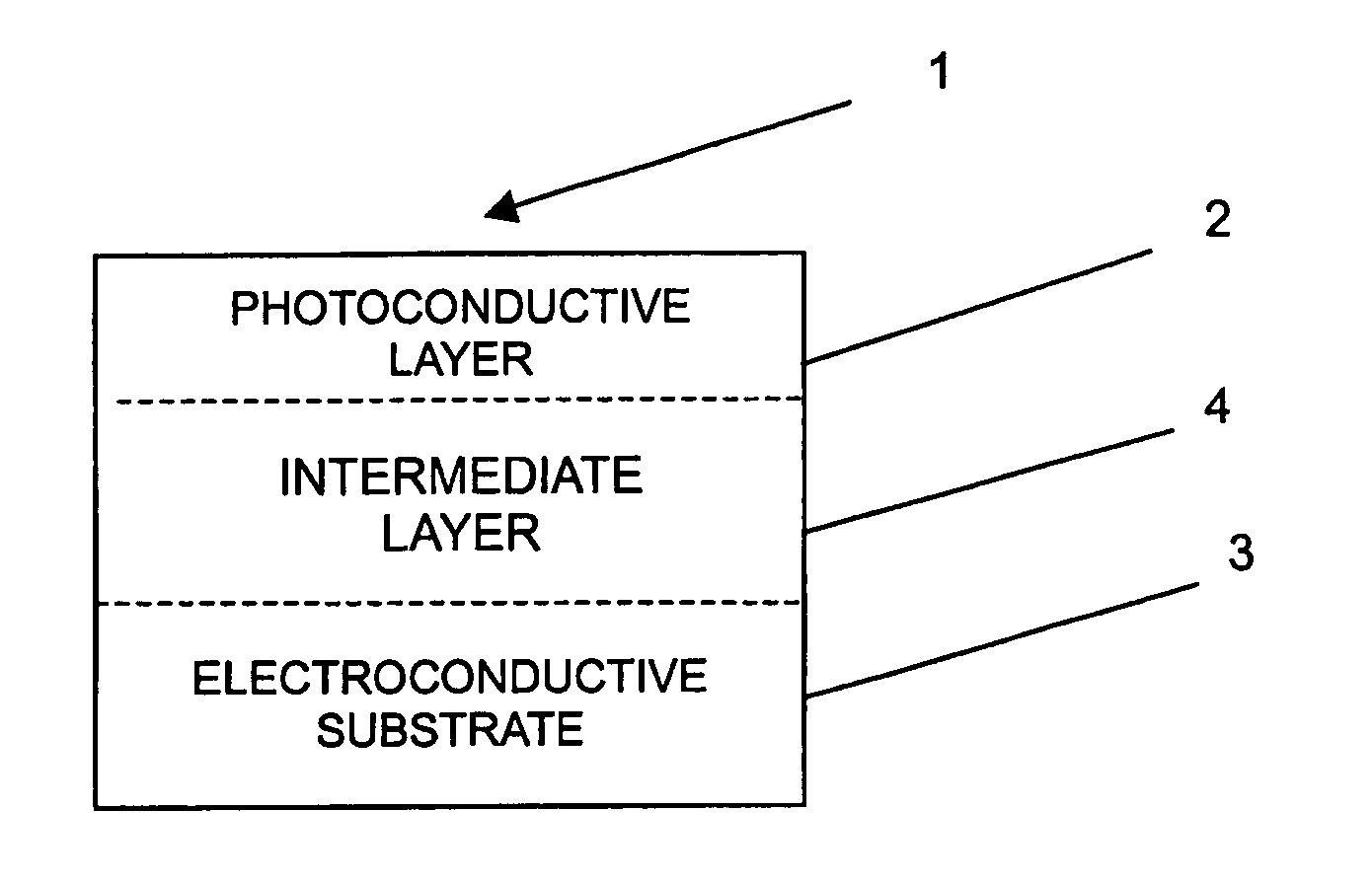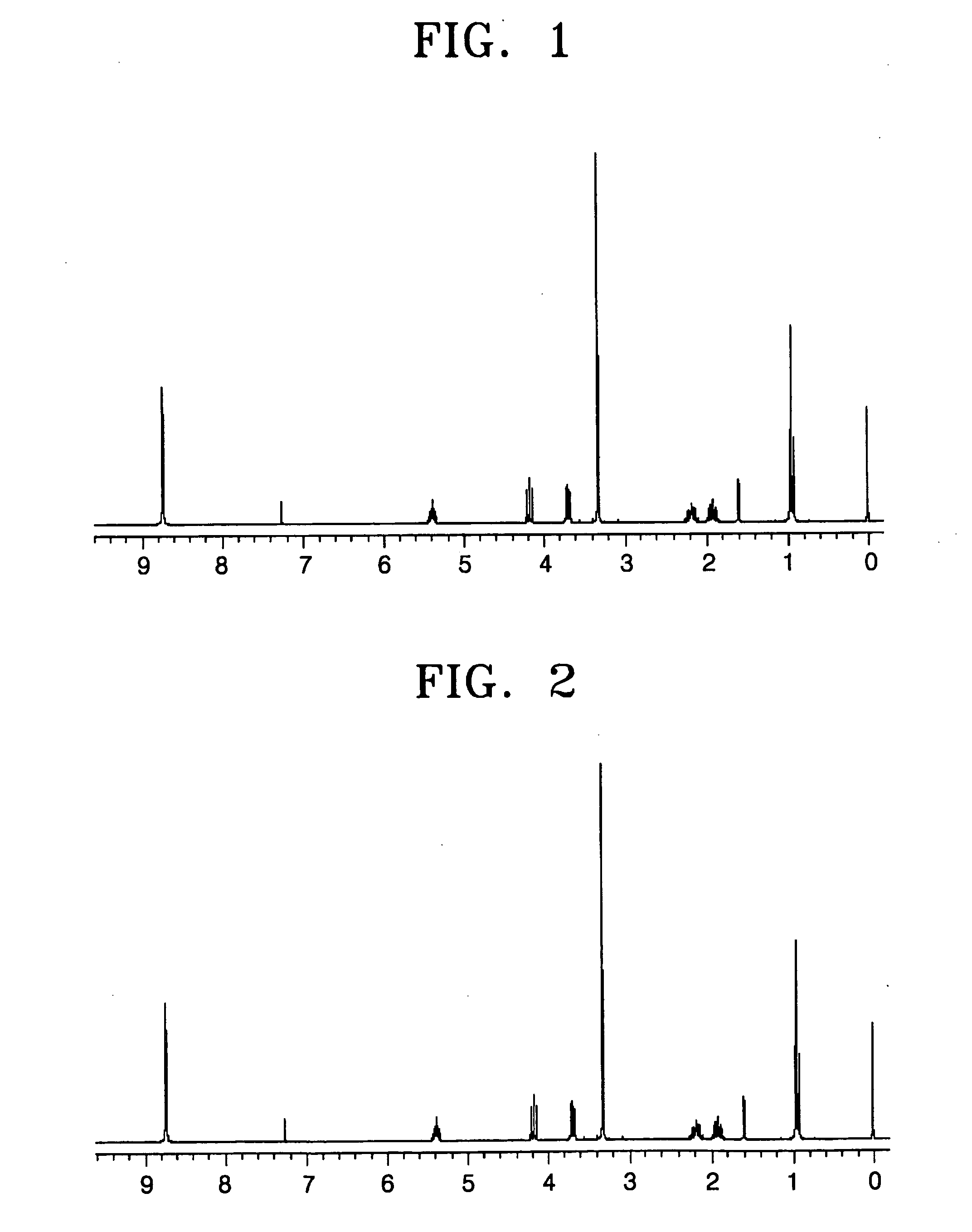Naphthalenetetracarboxylic diimide derivatives and electrophotographic photoconductor containing the same
a technology of naphthalenetetracarboxylic diimide and derivatives, applied in electrography/magnetography, instruments, organic chemistry, etc., can solve the problems of reduced charge potential, increased exposure potential after long-period use, and ineffective electron transport ability of dicyanofluorenone and diphenoquinone, etc., to achieve effective electron transport ability, effective solubility in organic solvents, and effective compatibility with polymer binder resins
- Summary
- Abstract
- Description
- Claims
- Application Information
AI Technical Summary
Benefits of technology
Problems solved by technology
Method used
Image
Examples
preparation example 1
Preparation of Compound (I)
The following is a description of the preparation of the compound (I) having formula (2) below.
A 250 ml three neck flask equipped with a reflux condenser was purged with nitrogen, and then 10.72 g (0.04 mol) of naphthalene-1,4,5,8-tetracarboxylic acid dianhydride and 100 ml of DMF were poured thereinto and stirred at room temperature. Then, a mixture of 8.67 g (0.084 mol) of 2-amino-1 -methoxybutane and 20 ml of DMF was slowly added drop by drop and stirred at room temperature. The temperature of the mixture was raised to 155° C., and then the mixture was refluxed for 3 hours and cooled to room temperature. 60 ml of methanol was added to the reactant, and the product was precipitated and filtered. The filtered solid was recrystallized from a chloroform / ethanol solvent and dried in a vacuum to obtain 16.5 g of the compound (I) as a crystal with a light orange color (yield: 94%). The NMR spectrum of the obtained compound (I) is shown in FIG. 1.
preparation example 2
Preparation of Compound (II)
The following is a description of the preparation of the compound (II) having formula (3) below.
15.27 g of the compound (II) was obtained as a crystal with a light orange color in the same manner as in Preparation Example 1, except that 7.5 g (0.084 mol) of 2-amino-1-methoxypropane was used instead of 2-amino-1-methoxybutane (yield: 93%). The NMR spectrum of the obtained compound (II) is shown in FIG. 2.
example 1
4.5 parts by weight of the compound (I), 0.9 parts by weight of α-titanylphthalocyanine, 9 parts by weight of an enaminestilben-based hole transport material having formula (7) below, 15.9 parts by weight of a binder resin compound (O-PET, available from KANEBO), 84 parts by weight of methylene chloride, and 36 parts by weight of 1,1,2-trichloroethane were sand-milled for 2 hours and ultrasonically dispersed. The obtained solution was coated on an aluminum-PET sheet using a ring bar and dried at 110° C. for 1 hour to prepare an organophotoconductor drum having a thickness of about 10 to 12 μm.
PUM
| Property | Measurement | Unit |
|---|---|---|
| thick | aaaaa | aaaaa |
| electroconductive | aaaaa | aaaaa |
| photoconductive | aaaaa | aaaaa |
Abstract
Description
Claims
Application Information
 Login to View More
Login to View More - R&D
- Intellectual Property
- Life Sciences
- Materials
- Tech Scout
- Unparalleled Data Quality
- Higher Quality Content
- 60% Fewer Hallucinations
Browse by: Latest US Patents, China's latest patents, Technical Efficacy Thesaurus, Application Domain, Technology Topic, Popular Technical Reports.
© 2025 PatSnap. All rights reserved.Legal|Privacy policy|Modern Slavery Act Transparency Statement|Sitemap|About US| Contact US: help@patsnap.com



